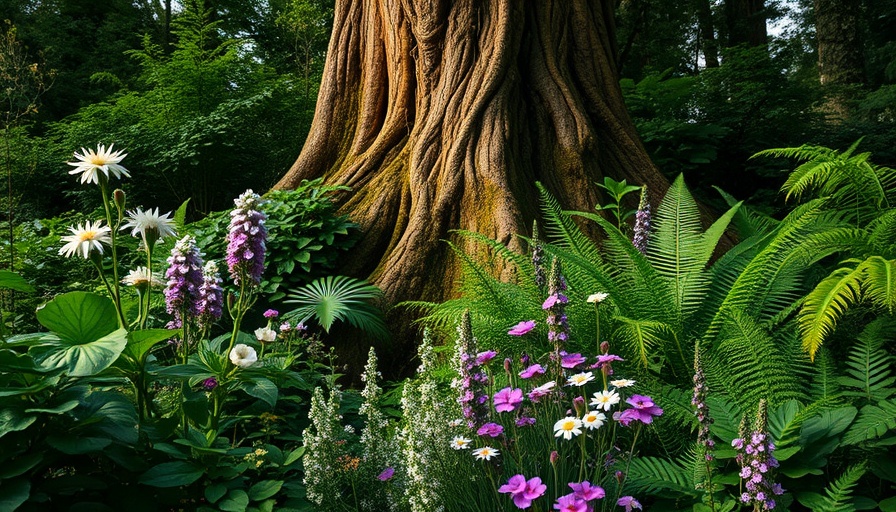
How Your Yard Can Revitalize Biodiversity
In recent years, home gardening has transcended mere aesthetics; it’s now recognized as a crucial component of supporting local wildlife and combating the biodiversity crisis. With over 15 years at the frontline, entomologist Douglas Tallamy emphasizes that fostering healthy ecosystems in our own backyards presents a unique opportunity. It turns out that small changes in our gardening practices can lead to significant ecological impacts.
The Power of Keystone Species
At the heart of Tallamy's approach lies the implementation of native keystone species. These plants—though often overlooked—are essential for sustaining the local food web. For instance, it’s astonishing to learn that just 14% of native plants supply a staggering 90% of the caterpillars that serve as food for birds and other wildlife. By prioritizing keystone species like goldenrod or native asters, homeowners can provide critical nutrition for the local fauna. Imagine transforming a section of your yard into a vibrant ecosystem, rather than simply a patch of green.
Creating a Continuous Bloom
Aiming for a continuous bloom is another essential strategy in enhancing biodiversity. Planting a variety of flowering species that bloom at different times throughout the seasons ensures that pollinators like bees and butterflies will constantly find food. This approach fosters an environment where these pollinators can thrive, increasing pollination for your plants while supporting overall ecological health. By selecting a mix of spring, summer, and fall bloomers, homeowners can maintain a lively and vibrant garden all year round.
Simple Steps to Make a Big Difference
To initiate a thriving habitat, homeowners should consider several practical steps. Begin by reducing traditional lawn space—a practice that consumes water and encourages dependency on chemicals. Instead, replace some of that space with diverse plantings. You can also elevate biodiversity by opting for yellow outdoor light bulbs instead of white ones to reduce light pollution, which can disrupt wildlife patterns.
Removing Invasive Species
Furthermore, taking the time to identify and remove invasive plants on your property is crucial. Invasive species outcompete native flora and disrupt local ecosystems. By replacing them with native plants, not only do we reclaim ecological balance, but we also create a sanctuary for thriving wildlife. This simple effort contributes exponentially to the health of both local biodiversity and the overall environment.
Engagement with Community and Nature
Finally, engaging with your community can make a significant difference. Participate in local gardening clubs, attend public lectures, or volunteer for initiatives like Tallamy's Homegrown National Park project. These experiences build social connections while expanding your knowledge base and influence. By spreading awareness and encouraging others in your community to adopt similar practices, you can build a collective momentum that fosters greater environmental change.
Making a Lasting Impact
The desire to help combat the biodiversity crisis often leaves individuals feeling overwhelmed. However, by taking small, informed actions in our own backyards, we can collectively contribute to a larger ecological restoration movement. The synergy between personal gardens and nature can help revitalize ecosystems, encourage wildlife, and inspire future generations to value and nurture the natural world.
So, as you plan your next gardening project, remember that each choice counts. You have the power to make a profound impact right from your backyard. Don’t just garden—become a steward of nature.
Discover more ways to sustainably enhance your outdoor spaces and embrace your role in nature conservation. Let’s transform our yards into vibrant ecosystems, one plant at a time.
 Add Row
Add Row  Add
Add 




Write A Comment